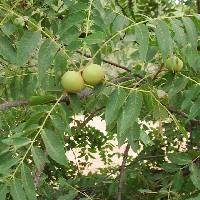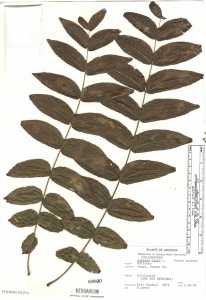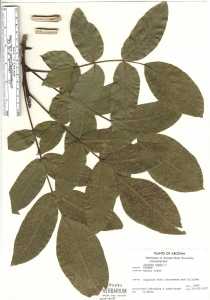Shrubs or trees , 3-50 m. Bark light to dark gray or gray-brown, smooth or split into ridges or plates. Twigs purplish brown, terete, stout, sparsely to densely covered with glands and capitate-glandular hairs, sometimes also with scales or fasciculate hairs, early in season with multiradiate hairs; leaf scars triangular or 3-lobed, large; pith chambered. Bud scales valvate, densely hirsute. Leaves usually odd-, sometimes even-pinnate; petiole and rachis with indument as twigs. Leaflets 5-25, sessile or subsessile, often aromatic, uniform in size or median leaflets largest, (2.5-)4.3-15(-17.5) × 0.8-6.5 cm; surfaces usually with nonglandular hairs (simple and/or fasciculate), glandular hairs, sessile glands, and/or scales, sometimes glabrous. Staminate catkins solitary from 2d-year twigs, sessile; stamens 7-50 per flower, glabrous or pilose. Pistillate flowers solitary or in terminal racemes. Fruits nuts enclosed in husks, not compressed; husks thick, indehiscent; nuts tan, neither compressed nor angled, grooved, ridged, rugulose, or smooth; shells thick. Seeds sweet. x = 16.
Juglans is a very important source of edible nuts, dyes, and wood for cabinet work, furniture, and construction. Juglans regia Linnaeus, the walnut of commerce, is widely cultivated in California; it is easily distinguished from native species by its leaves with 5-11 broad, entire leaflets and nuts with thin rugulose shells, not grooved or ridged. Because of its sensitivity to native pathogens, J . regia is usually grown as stem-grafts on roots of native or hybrid walnuts (see discussion under J . hindsii ). Occasional seedlings of J . regia have been reported from the vicinity of cultivated plants, but these seldom, if ever, live to maturity.
The growth form, bark, and fruit are important taxonomically in Juglans , but these usually are not available on herbarium specimens. As with many woody plants, the first one or two leaves of the season (i.e., the lowermost leaves on the twig) are sometimes atypical in structure, having broader, blunter leaflets. The fasciculate hairs on the veins normally have more rays than those on the blade. In addition to the types of hairs described below, small multiradiate hairs are found on the immature twigs, petioles, rachises, and midribs. They are usually gone when the leaf is fully expanded, but they may persist for a short time afterwards.
PLANTS: Monoecious trees or large shrubs; pith chambered.
LEAVES: deciduous, odd-pinnate, alternate, aromatic, leaflets serrate or entire, glandular-dotted beneath.
FLOWERS: staminate catkins lateral, axillary, pendant, on old wood; pistillate spike 1-25 flowered, terminal on new leafy growth; staminate and pistillate flowers with 2-6 bracts and 4 sepals; carpels 2(3-4), with 2 elongate recurved style branches; stigmas plumose.
FRUITS: husk indehiscent.
NOTES: Ca. 20 spp. in the Americas and Eurasia. (Classical Latin name for the walnut). Manning, W. E. 1957. J. Arnold Arbor. 38:121-150.
REFERENCES: Laferriere, Joseph E. 1994. Juglandaceae. J. Ariz. - Nev. Acad. Sci. Volume 27, 219.
Staminate catkins protruding from the buds in autumn, elongating in spring, densely fld, pendulous; bract adherent to the "perianth," except at its summit; "perianth " spreading, 3-6-lobed, with 8-40 stamens on its upper side; anthers glabrous; pistillate fls in short spikes terminating the branches, closely subtended by a 3-lobed, cup-shaped involucre that ripens with the fr to form a husk; perianth minute, 4-parted; husk indehiscent, clammy- glandular; nut indehiscent but ±distinctly 2-valved; trees with partitioned pith and odd-pinnate lvs, the median-lateral lfls the largest, inequilateral or falcate; lfls with conduplicate vernation.
20, widespread.
Gleason, Henry A. & Cronquist, Arthur J. 1991. Manual of vascular plants of northeastern United States and adjacent Canada. lxxv + 910 pp.
©The New York Botanical Garden. All rights reserved. Used by permission.








